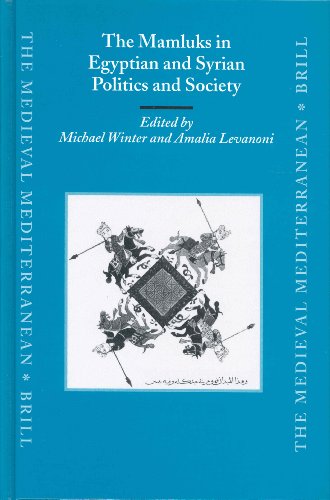

Most ebook files are in PDF format, so you can easily read them using various software such as Foxit Reader or directly on the Google Chrome browser.
Some ebook files are released by publishers in other formats such as .awz, .mobi, .epub, .fb2, etc. You may need to install specific software to read these formats on mobile/PC, such as Calibre.
Please read the tutorial at this link: https://ebookbell.com/faq
We offer FREE conversion to the popular formats you request; however, this may take some time. Therefore, right after payment, please email us, and we will try to provide the service as quickly as possible.
For some exceptional file formats or broken links (if any), please refrain from opening any disputes. Instead, email us first, and we will try to assist within a maximum of 6 hours.
EbookBell Team

4.0
26 reviews
ISBN 13: 9789004132863
Author: Michael Winter, Amalia Levanoni
This volume consists of 19 studies by leading historians of the Mamluks. Drawing on primary Arabic sources, the studies discuss central political, military, urban, social, administrative, economic, financial and religious aspects of the Mamluk Empire that was established in 1250 by Mamluks (manumitted military slaves, mostly Turks and Circassians). It was a Sunni orthodox state that had a formidable military, a developed and sophisticated economy, a centralized Arab bureaucracy and prestigious religious and educational institutions.
There are special articles about Cairo, Damascus, Jerusalem, Safed and Acre. The last part of the volume describes the Mamluk military class that survived in Egypt (although in a transformed form) under the Ottoman suzerainty after the Empire annexed Egypt and Syria in 1517.
With contributions by Reuven Aharoni, Reuven Amitai, Frederic Bauden, Jonathan Berkey, Daniel Crecelius, Joseph Drory, Jane Hathaway, Robert Irwin, Donald Little, Nimrod Luz, Carl Petry, Thomas Philipp, Yossef Rapoport, André Raymond, Donald S. Richards, Warren Schultz and Hannah Taragan.
Doors that Open Meanings: Baybars’s Red Mosque at Safed
The Mongol Occupation of Damascus in 1300: A Study of Mamluk Loyalties
Glimpses of Provincial Mamluk Society from the Documents of the Ḥaram al-Sharīf in Jerusalem
The Recovery of Mamluk Chancery Documents in an Unsuspected Place
The Sultan’s Laqab: A Sign of a New Order in Mamluk Factionalism?
Gunpowder and Firearms in the Mamluk Sultanate Reconsidered
The Governance of Jerusalem under Qāytbāy
Founding a New Mamlaka: Some Remarks Concerning Safed and the Organization of the Region in the Mamluk period
Ibn Taymiyya on Divorce Oaths
The Circulation of Dirhams in the Bahri Period
The Muḥtasibs of Cairo under the Mamluks: Toward an Understanding of an Islamic Institution
The Estate of al-Khuwand Fāṭima al-Khaṣṣbakiyya: Royal Spouse, Autonomous Investor
Mamluks and their Households in Late Mamluk Damascus: A waqf Study
The Last Mamluk Household
Urban Residential Houses in Mamluk Syria: Forms, Characteristics and the Impact of Socio-cultural Forces
The Wealth of the Egyptian Emirs at the End of the Seventeenth Century
Problems of ’Abd al-Raḥmān Katkhudā’s Leadership of the Qazdughli Faction
Mamluk "revivals" and Mamluk Nostalgia in Ottoman Egypt
Bedouin and Mamluks in Egypt—Co-existence in a State of Duality
the mamluks in egyptian
the mamluks in egyptian politics and society pdf
describe the mamluk sultanate
what are the 6 ancient egyptian amulets
what are the 5 main egyptian gods
who were the mamluks (5 points)
egyptian mamluks vs mongols
Tags: Michael Winter, Amalia Levanoni, Mamluks, Egyptian